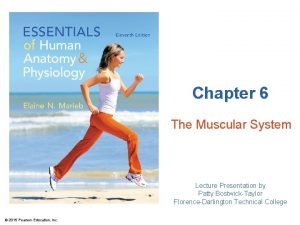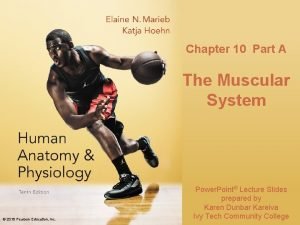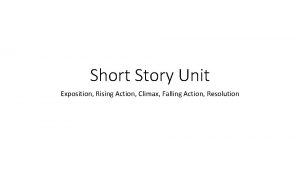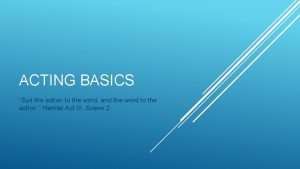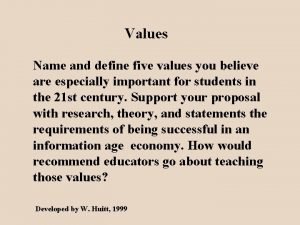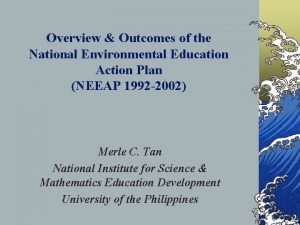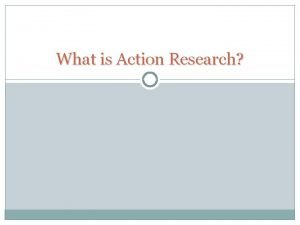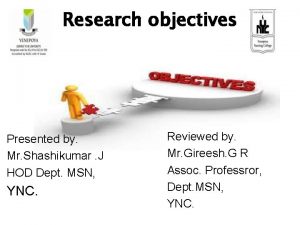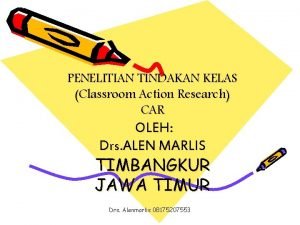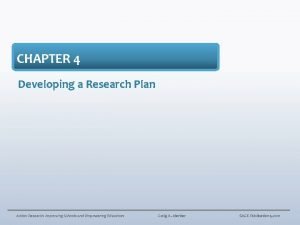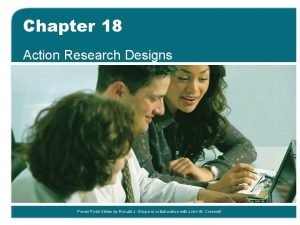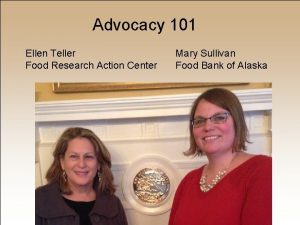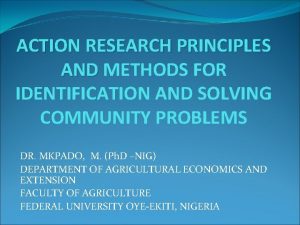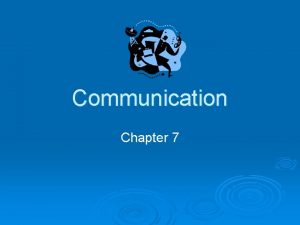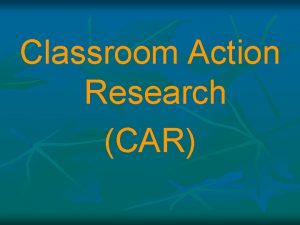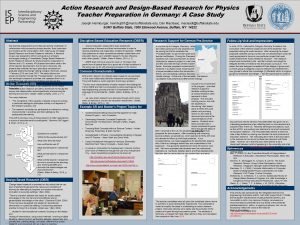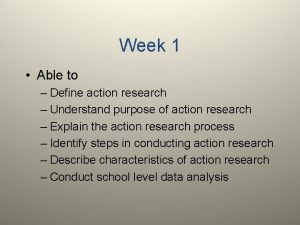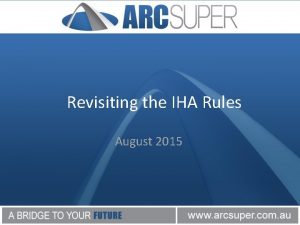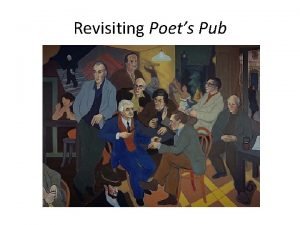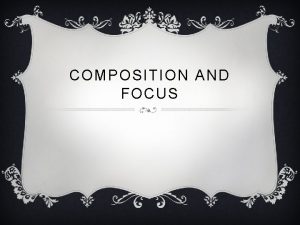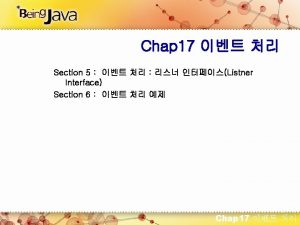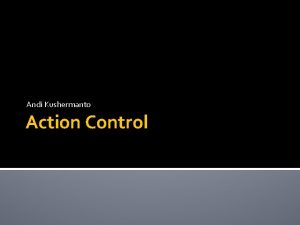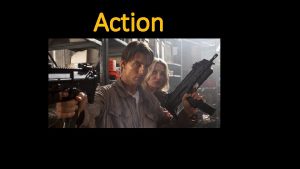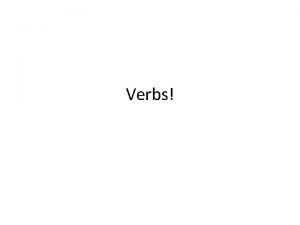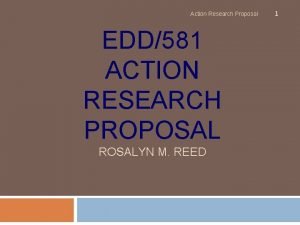REVISITING EDUCATION RESEARCH WITH FOCUS ON ACTION RESEARCH

































- Slides: 33

REVISITING EDUCATION RESEARCH WITH FOCUS ON ACTION RESEARCH Nov. 9 , 2012

2 Mc. Graw-Hill © 2008 The Mc. Graw-Hill Companies, Inc. All rights reserved.

3 Mc. Graw-Hill © 2008 The Mc. Graw-Hill Companies, Inc. All rights reserved.

4 Mc. Graw-Hill © 2008 The Mc. Graw-Hill Companies, Inc. All rights reserved.

5 WHAT IS RESEARCH? As cited by Calderon and Gonzales (1993), research in general is a n systematic, refined, careful, critical and disciplined inquiry varying in method directed to the clarification and/or resolution of a problem. n RESEARCH… n n n Mc. Graw-Hill starts with a problem, collects data or facts, analyzes and interprets these critically and reaches a decision based on actual evidence. © 2008 The Mc. Graw-Hill Companies, Inc. All rights reserved.

6 RESEARCH IS A POWERFUL AND LOGICAL PROCESS IN DOING Mc. Graw-Hill M&E © 2008 The Mc. Graw-Hill Companies, Inc. All rights reserved.

7 Mc. Graw-Hill © 2008 The Mc. Graw-Hill Companies, Inc. All rights reserved.

8 School M & E System Mc. Graw-Hill © 2008 The Mc. Graw-Hill Companies, Inc. All rights reserved.

9 Mc. Graw-Hill © 2008 The Mc. Graw-Hill Companies, Inc. All rights reserved.

10 Mc. Graw-Hill © 2008 The Mc. Graw-Hill Companies, Inc. All rights reserved.

11 Mc. Graw-Hill © 2008 The Mc. Graw-Hill Companies, Inc. All rights reserved.

12 Mc. Graw-Hill © 2008 The Mc. Graw-Hill Companies, Inc. All rights reserved.

n n n n n FOCUS on EDUCATIONAL RESEARCH… 13 American philosopher John Dewey described the scientific method as a procedure for thinking more objectively (Mertler & Charles, 2011). He presented the procedure as a series of the following steps: 1. Clarify the main question inherent in the problem. 2. State a hypothesis (a possible answer to the question). 3. Collect, analyze, and interpret information related to the question, such that it will permit you to answer the question. 4. Form conclusions derived from your analyses. 5. Use the conclusions to verify or reject the hypothesis. SHARE/DISSEMINATE/PUBLISH UTILIZE / ACT Mc. Graw-Hill © 2008 The Mc. Graw-Hill Companies, Inc. All rights reserved.

Organizing the Parts of the Research Report Title Page Acknowledgment* Dedication** Abstract*** Chapter I. BACKGROUND OF THE STUDY – Rationale – Statement of the Problem – Statement of the Hypotheses – Significance/Importance of the Study – Scope and Delimitation of the Study – Definition of Terms Chapter II. REVIEW OF RELATED LITERATURE Chapter III. MATERIALS AND METHODS Chapter IV. DATA PRESENTATION, ANALYSIS AND INTERPRETATION Chapter V. SUMMARY, CONCLUSIONS AND RECOMMENDATIONS BIBLIOGRAPHY APPENDICES CURRICULUM VITAE *The ACKNOWLEDGMENT includes words of indebtedness to persons, groups of persons or institutions for the realization of the science research project. ** The DEDICATION includes words of thanks to people who gave inspiration to realize the project. ***The ABSTRACT is a one-page presentation of what the science research project is all about. This is in paragraph form.

15 Simplified Research Paper n 2500 words, 10 pages, double spaced Mc. Graw-Hill © 2008 The Mc. Graw-Hill Companies, Inc. All rights reserved.

16 FOR EPS I, DS and EPS II FOR EPS I, DS, SCHOOLS Mc. Graw-Hill © 2008 The Mc. Graw-Hill Companies, Inc. All rights reserved.

Action Research Mc. Graw-Hill 17 © 2008 The Mc. Graw-Hill Companies, Inc. All rights reserved.

18 What is Action Research? n n n Action research is conducted by one or more individuals or groups for the purpose of solving a problem or obtaining information in order to inform local practice. Such studies are seriously limited in generalizability. Action research does not require complete mastery of the major types of research earlier discussed. Mc. Graw-Hill © 2008 The Mc. Graw-Hill Companies, Inc. All rights reserved.

19 Basic Assumptions Underlying Action Research (Table 23. 1) Assumption Example Teachers and other education professionals have the authority to make decisions. A team of teachers, after discussions with the school administration, decide to meet weekly to revise the mathematics curriculum to make it more relevant to lowachieving students. Teachers and other education professionals want to improve their practice. A group of teachers decide to observe each other on a weekly basis and then discuss ways to improve their teaching. Teachers and other education professionals are committed to continual professional development. Teachers and other education professionals will and can engage in systematic research. Mc. Graw-Hill The entire staff—administration, teachers, counselors, and clerical staff—of an elementary school go on a retreat to plan ways to improve the attendance and discipline policies for the school. Following up on the example just listed above, the staff decides to collect data by reviewing the attendance records of chronic absentees over the past year, to interview a random sample of attendees and absentees to determine why they differ, to hold a series of after-school roundtable sessions between disciplineprone students and faculty to identify problems and discuss ways to resolve issues of contention, and to establish a mentoring system in which selected students can serve as counselors to students needing help with their assigned work. © 2008 The Mc. Graw-Hill Companies, Inc. All rights reserved.

Assumptions Underlying Action Research n 20 A number of assumptions underlie action research: n n Mc. Graw-Hill Participants have the authority to make decisions Those involved are seriously committed to improving their performance Educators and others involved in schools want to engage in research systematically Those performing the research will make the necessary changes and recommendations © 2008 The Mc. Graw-Hill Companies, Inc. All rights reserved.

21 Types of Action Research n There are two main types of action research: 1) Practical Action Research n n 2) Participatory Action Research n n Mc. Graw-Hill Addresses a specific problem Primary purpose is to improve practice and inform larger issues Empower individuals and groups to improve their lives and bring about a social change Stakeholders are involved and are active in all processes (collaborative participation) © 2008 The Mc. Graw-Hill Companies, Inc. All rights reserved.

Stakeholders Mc. Graw-Hill 22 © 2008 The Mc. Graw-Hill Companies, Inc. All rights reserved.

The Role of the “Expert” in Action Research Mc. Graw-Hill 23 © 2008 The Mc. Graw-Hill Companies, Inc. All rights reserved.

24 Levels of Participation n n Provide information Become informed of purpose of the study Receive findings Assist in data collection Review findings n n Participate in interpretation Participate in designing the project Participate in problem specification Initiate study There are nine levels, as shown in Figure 24. 3. Mc. Graw-Hill © 2008 The Mc. Graw-Hill Companies, Inc. All rights reserved.

25 Participation in Action Research (Fig. 24. 4) Mc. Graw-Hill © 2008 The Mc. Graw-Hill Companies, Inc. All rights reserved.

26 Levels of Participation in Action Research (Fig. 24. 3) Mc. Graw-Hill © 2008 The Mc. Graw-Hill Companies, Inc. All rights reserved.

27 Steps in Action Research n There are four steps or stages in Action Research: 1) 2) 3) 4) Mc. Graw-Hill Identifying the research question Gathering the necessary information Analyzing and interpreting the information Developing a plan of action © 2008 The Mc. Graw-Hill Companies, Inc. All rights reserved.

28 Advantages of Action Research n n n It can be performed by anyone, in any type of school or institution It can help to improve educational practice It can help education and other professionals to improve their craft It can help them learn to identify problems systematically It can build up a small community of research-oriented individuals at the local level Similarities and Differences of Types of Research are shown in Table 24. 2. Mc. Graw-Hill © 2008 The Mc. Graw-Hill Companies, Inc. All rights reserved.

Similarities and Differences Between Action Research & Formal Quantitative and Qualitative Research Action Research Formal Research Systematic inquiry. Goal is to solve problems of local concern. Goal is to develop and test theories and to produce knowledge generalizable to wide population. Little formal training required to conduct such studies. Considerable training required to conduct such studies. Intent is to identify and correct problems. Intent is to investigate larger issues, of local concern. Carried out by teacher or other local education professional. Carried out by researcher who is not usually involved in local situation. Uses primarily teacher-developed instruments. Uses primarily professionally-developed instruments. Less rigorous. More rigorous. Usually value-based. Frequently value-neutral. Purposive samples selected. Random samples (if possible) preferred. Selective opinions of researcher often considered as data. Selective opinions of researcher never considered as data. Generalizability is very limited. Mc. Graw-Hill 29 Generalizability often appropriate. © 2008 The Mc. Graw-Hill Companies, Inc. All rights reserved.

RESEARCH AGENDA Mc. Graw-Hill 30 © 2008 The Mc. Graw-Hill Companies, Inc. All rights reserved.

31 Science Research/Investigatory Project Mc. Graw-Hill © 2008 The Mc. Graw-Hill Companies, Inc. All rights reserved.

32 Science Research/Investigatory Project Mc. Graw-Hill © 2008 The Mc. Graw-Hill Companies, Inc. All rights reserved.

33 III Research Paper Title Page and Table of Contents n Introduction (including purpose, problem, hypothesis) n Materials and Methods n Results n Discussion Science n Conclusions Research/Investigat n Acknowledgments ory Project n References n Abstract Mc. Graw-Hill n © 2008 The Mc. Graw-Hill Companies, Inc. All rights reserved.
 Prolepsis
Prolepsis Porter's generic strategies
Porter's generic strategies Timex cost leadership strategy
Timex cost leadership strategy Actor focus vs object focus
Actor focus vs object focus Steps involved in historical research
Steps involved in historical research Action research project examples
Action research project examples Focus figure 10.1 muscle action
Focus figure 10.1 muscle action Superficial muscles anterior view
Superficial muscles anterior view In media res literary definition
In media res literary definition Exposition in story elements
Exposition in story elements Story mountain exposition
Story mountain exposition Exposition rising action climax falling action resolution
Exposition rising action climax falling action resolution Suit the action to the word the word to the action meaning
Suit the action to the word the word to the action meaning Values clarification
Values clarification Trgpol
Trgpol How formal education differ from als
How formal education differ from als Difference between health education and counselling
Difference between health education and counselling Extension education is non formal education
Extension education is non formal education Action research vs case study
Action research vs case study Research objectives examples
Research objectives examples Contoh classroom action research
Contoh classroom action research Contoh judul penelitian classroom action research
Contoh judul penelitian classroom action research Action research vs case study
Action research vs case study Action research designs
Action research designs Ellen teller
Ellen teller Action research front page
Action research front page Dialectical critique in action research
Dialectical critique in action research Action research cartoon
Action research cartoon Research action communication evaluation
Research action communication evaluation Contoh action research
Contoh action research Action research data analysis
Action research data analysis Action research topics in physics
Action research topics in physics Research action design
Research action design Define action research
Define action research






